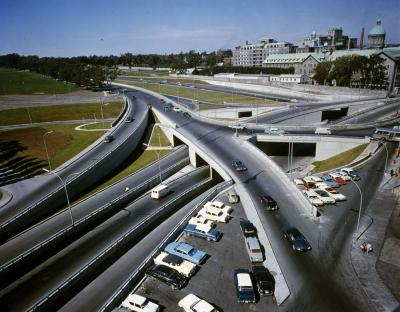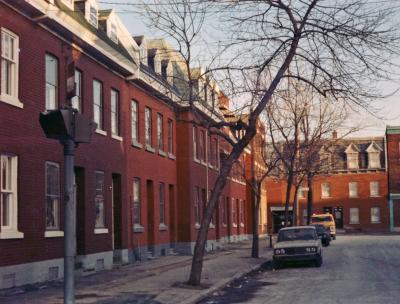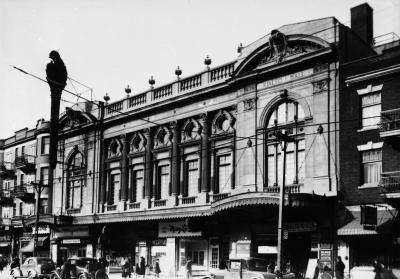Nestled in an area of Montréal known informally as “Little Latin America,” Sabor Latino grocery store, originally called Los Andes, carries a rich variety of Latin American products.
Just off rue Bélanger, near Saint-Denis, you can find a concentration of Latin American shops that some call the “Barrio Latino” or “Little Latin America.” The area is roughly bound by boulevard Saint-Laurent to the west and rue Saint-Hubert to the east, and stretches north up to rue Jarry.
Librairie espagnole
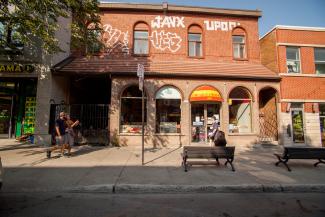
Commercial development seems to have followed the waves of immigration: first South American shops (especially Chile, Columbia, and Peru), then Central American (El Salvador and Guatemala). Latin American customers seemed to appreciate shopping there, regardless of their precise country of origin.
Sabor Latino
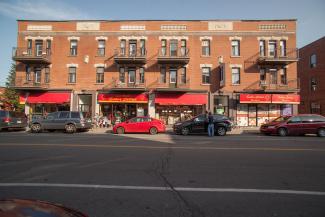
Birth of Barrio Latino
In the 1980s, rue Bélanger became home to numerous Latin American residents and businesses. Nestled in the heart of the area was Los Andes grocery, founded in 1984 by a Colombian Montrealer. Los Andes opening its doors can be considered in a certain sense the birth of Barrio Latino as its own distinctive neighbourhood. It went on to become a gathering spot for Latin Americans living in the neighbourhood or simply coming there to shop. During that same decade, there was also a boom of Latin American businesses in Petite-Patrie. Over time, different associations and community organizations have become part of this commercial hub, such as the Centre d’aide aux familles latino-américaines and the Association bolivienne.
Petite Amérique latine
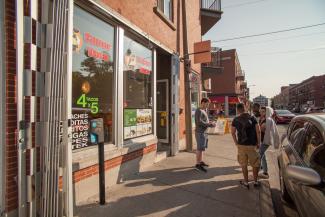
Los Andes: A string of businesses in the area
The Aguilar family left Columbia and settled in Montréal in the 1970s. María Angélica Pabón, the current owner of Sabor Latino, recounts how Hector Aguilar realized upon arriving that it was impossible to find Latin American products in the city. He would travel to El Salvador, Guatemala, and Peru, bringing food back with him, which he would sell to members of his community. Wanting a real storefront, he eventually set up shop on rue Bélanger. In addition to food items, he would bring back Latin American telenovelas, and movies. Aguilar went on to open several travel agencies, as well as Vidéo Latino, and, in 1984, the supermarket Los Andes, named after the mountain range. He soon added a butcher shop in the locale next door, and another travel agency a few streets down. He later opened businesses in Ottawa, Toronto, and Vancouver.
Sabor Latino
Sabor Latino
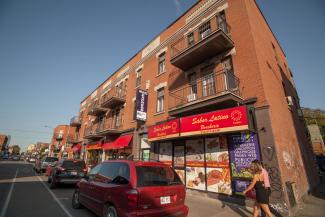
In 2002, in the midst of running many different businesses, Hector Aguilar decided to sell his grocery store, butcher shop, and restaurant on rue Bélanger to another Colombian family: the Pabóns. On arriving in Montréal in 1990, Mr. Pabón worked in the restaurant industry and then at Los Andes for six years, before purchasing it along with the restaurant. The restaurant was called Sabor Latino, and in the next few years the grocery store would take the same name. In 2009, the Pabón family purchased the supermarket on rue St. Laurent as well (also renamed Sabor Latino).
Following the acquisition, their clientele began to change. Before 2002, the majority of customers were from Central America. After the change in management, these customers tended to head to Marché Mundial on St. Laurent, which had Salvadoran owners. An increasing number of Mexican and Colombian immigrants began shopping at Sabor Latino, which led the Pabóns to begin importing more products from both those countries.
A vibrant place to shop
Petite Amérique latine
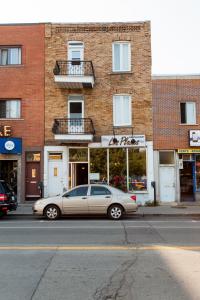
According to María Angélica Pabón, who currently owns Sabor Latino on rue Bélanger, the neighbourhood around her grocery store feels like a kind of little Latin America. She notes that when the grocery store opened its doors in the 1980s, “everyone wanted to live near Andes, everyone wanted to be a couple streets away because people would say, ‘Since everybody goes to Andes, people will walk the extra two blocks over to my place.’ So yes, there were a lot of stores concentrated near here. From here to over by Pie-IX you could find plenty of Latin American things: little restaurants, little cafés, lunch counters, and all that is really because of Andes.”
Pabón notes that there is a concentration of Latin American businesses, and also quite a few Latin Americans living nearby. Many members of the community who settled there decades earlier shop there, as do Montréalers of other origins who live nearby, she says. “The people who live around the store didn’t just get here. Most people here are really people [of Latin American origin] who have lived here for twenty years or longer. That’s what I notice anyways,” explains Pabón. “The Latinos who’ve arrived in the last ten years, I don’t know why, but most times they don’t look for a place in the city or even on the Island of Montréal, but off island, in the suburbs. That might be a cultural thing. Back home we don’t like living in the city centre, we like living outside the city because it’s a lot quieter. Back home it’s a safer place to be.”
Despite newcomers now settling in different neighbourhoods, Pabon still says that 70% of her customers are of Latin American descent and that many of them travel from the suburbs to do their shopping on rue Bélanger, since they can’t find the products that they need near home. She says that other residents of the neighbourhood around Bélanger make up the other 30% of her customer base.
Written and researched in collaboration with Matthieu Caron.
DEL POZO, José. « L’immigration des Latino-Américains. Une histoire de réfugiés et d’immigrants », dans Histoire d’immigrations au Québec, Québec, Presses de l’Université de Québec, 2014, p. 163-179.
GARCIA-LOPEZ, Magda. L’insertion urbaine des immigrants latino-américains à Montréal, Thèse Ph. D. Études urbaines, UQAM, 2003, 333 p.

